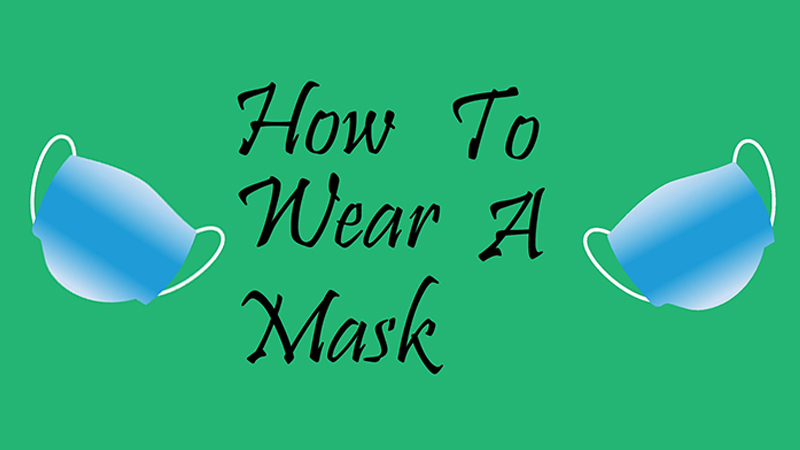William Mashburn
wmashburn@lc.edu
Let’s face it, wearing a mask is by far the most adaptive thing America has seen and one of the most controversial things to talk about right now. Those who choose to wear a mask are helping slow down the spread of COVID19. However, even if you’re wearing a mask, are you doing it right? Believe it or not, there are some ways people wear masks that are totally wrong. Let’s go over how to wear a mask, and what to do if you are unable to or don’t have one.
To kick things off, let’s talk about what type of masks are available. The most common one on the market right now is the traditional surgical masks, which are the blue or green ones with the white ear loops. These masks come in boxes of about 25 or so and are sold at most retailers. This mask, like all others, should be worn as follows. Firstly, make sure it’s on and covers both the mouth AND nose. The surgical mask has a little metal rod on the top that allows the wearer to pinch and make a “seal” so particles can’t enter. The mask should also have a comforting fit around the cheek and chin.
If the surgical mask isn’t for you there is a wide variety of other options available. For example, homemade masks are a very popular substitute. A cloth face covering, which if made correctly, is also efficient in catching your droplets. These droplets are how the virus spreads. Back in March the CDC and many others demonstrated how to use two rubber bands and cloth to make a no-sew face mask. However, these homemade masks can be a bit uncomfortable. One bought from others offers very limited customization though, and not everyone has the same facial structure so the same pre-made mask may not fit everyone who wears it.
Other masks, like the N95, are a good mask to wear. These higher tier masks are mainly used for our brave, on the front-line healthcare workers. If you are fortunate enough to have access to one it should be worn like the rest. Cover your nose and mouth and have a secure fit around the tip of your nose. This will help prevent most particles from entering your nose/mouth and therefore reduce your risk of catching or spreading COVID-19. In the end, all masks help reduce the risk of catching and giving the virus. If everyone wears a mask or face covering, such as a rag or even a bandana, we can control it enough to begin to see a more “normal” society.




